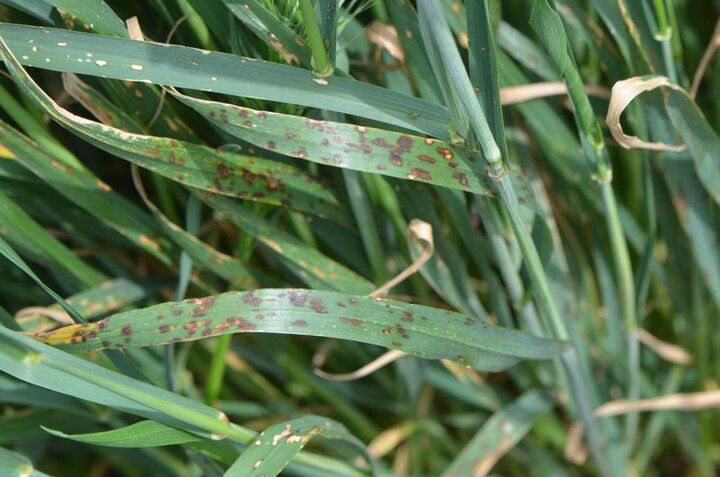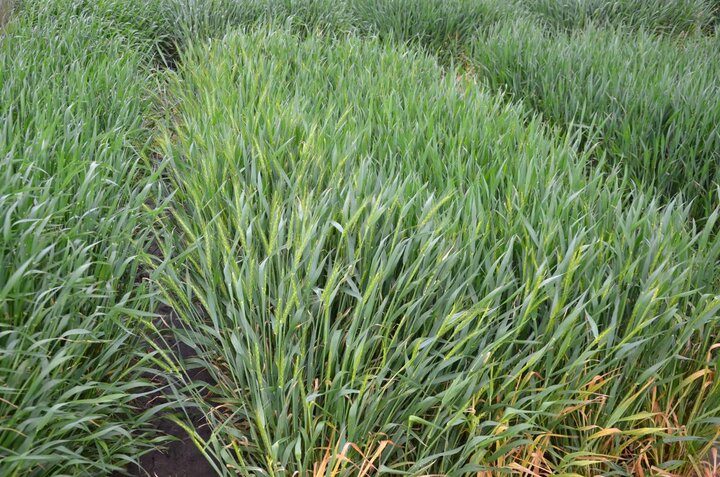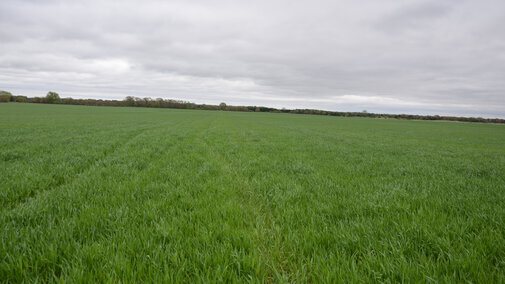Wheat field surveys in southeast and south central Nebraska (Lancaster, Saunders, Saline, Filmore, Thayer, Nuckolls, Webster, and Clay counties) on April 27-28 found little disease in growers’ fields. The wheat crop looked healthy and was growing vigorously (Figure 1) thanks to the recent rains.
However, research plots at Havelock Farm in Lincoln (Lancaster County), the Agricultural Research and Development Center (ARDC) near Mead (Saunders County), and the South Central Ag Lab (SCAL) near Clay Center (Clay County) had significant levels of fungal leaf spot diseases (Figure 2), powdery mildew (Figure 3) and stripe rust (Figures 4 and 5).
The diseases were severe on the lower leaves and spreading to the upper leaves. Stripe rust was found at the ARDC at low levels and at SCAL at higher levels with hot spots (Figures 4 and 5) scattered throughout the research field and as much as 50% severity on some leaves. Several plots were severely lodged (Figure 6) at the ARDC and SCAL due to the recent storms.
Wheat growth stage ranged from Feekes 7 (second to sixth nodes detectable) to the boot stage (Feekes 10). Heads were partially or fully emerged in a few plots at Havelock Farm (Feekes 10.1-10.5, Figure 7).
Management
Current weather conditions are favorable to development and spread of stripe rust, fungal leaf spot diseases, and powdery mildew. If any of these diseases is present at low to moderate levels in your field, consider applying a fungicide to protect the flag leaf. The risk for Fusarium head blight (scab) rises with excessive rainfall before and during flowering. If the wet weather that is currently prevailing continues, this risk will be high and may necessitate a fungicide application during flowering.
The optimum timing for a fungicide application to suppress Fusarium head blight is early flowering, when approximately 15% of the main tillers in a field are extruding anthers. However, recent research indicates that a fungicide application up to a week later is just as effective. Observe the pre-harvest interval and other restrictions on the fungicide label. See Table 1 for a list of fungicides and their efficacies compiled by the North Central Regional Committee on Management of Small Grain Diseases (NCERA-184). The products highlighted in yellow in the table were added in 2016.







